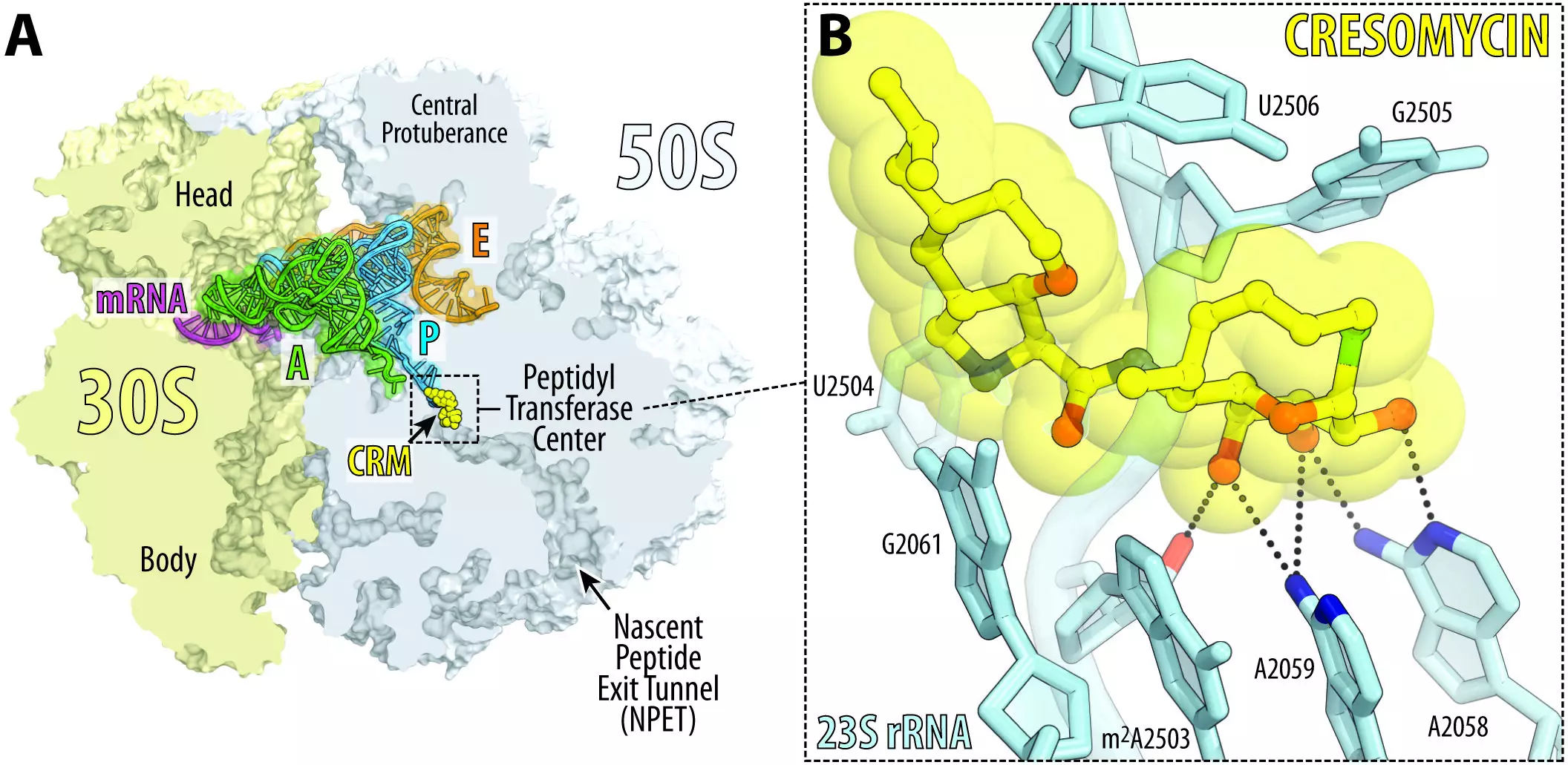

The global public health crisis brought on by antimicrobial resistance has been a daunting challenge for medical professionals and researchers alike. However, a team of Harvard researchers led by Andrew Myers has developed a groundbreaking antibiotic that effectively overcomes these resistance mechanisms. Published in Science, their study introduces cresomycin, a synthetic compound that has proven to be deadly to many strains of drug-resistant bacteria, including notorious pathogens like Staphylococcus aureus and Pseudomonas aeruginosa.
Unlike clinically approved antibiotics, cresomycin demonstrates significantly improved inhibitory activity against a broad range of pathogenic bacterial strains. With over a million lives claimed by bacterial infections annually, the urgent need for more effective drugs becomes evident. While it is too early to determine the compound’s safety and efficacy in humans, the promising results pave the way for further research and development in the fight against superbugs.
Cresomycin’s success lies in its enhanced ability to bind to bacterial ribosomes, the biomolecular machines responsible for protein synthesis. Disrupting ribosomal function is a common mechanism employed by existing antibiotics, but bacteria have developed shielding mechanisms that render these drugs ineffective. Myers’ team has found that cresomycin can overcome these resistance mechanisms by adopting a rigidified shape that closely mimics its binding target. This structural advantage enables the drug to have a stronger grip on the ribosome, ensuring its activity is not blocked.
The new compound draws inspiration from lincosamides, a class of antibiotics that includes the widely prescribed clindamycin. However, unlike its semisynthetic predecessors, cresomycin is a fully synthetic compound with unique chemical modifications that were previously inaccessible. This innovative approach to antibiotic design provides researchers with unprecedented freedom to enhance drug efficacy and tackle antimicrobial resistance.
The researchers employed a technique called component-based synthesis, developed by the Myers lab. This approach involves constructing large molecular components of equal complexity and assembling them at later stages. It is akin to pre-building sections of a complicated LEGO set before bringing them together. This adaptable and completely synthetic system allows for the creation and testing of hundreds of target molecules, expediting the drug discovery process.
The battle against superbugs is of paramount importance in preserving modern medicine as we know it. Antibiotics lay the foundation for various medical interventions, from routine surgeries to cancer treatments. As co-author Kelvin Wu emphasizes, the stakes are high. Finding effective solutions to combat antimicrobial resistance is crucial for the well-being of individuals worldwide.
With the introduction of cresomycin, researchers have made a significant stride in the ongoing fight against drug-resistant bacteria. The innovative design and synthetic nature of this new antibiotic open doors to limitless possibilities in combating antimicrobial resistance. While further research, including preclinical profiling studies, is necessary to solidify cresomycin’s potential as a safe and effective treatment option, the study offers hope and inspiration to scientists determined to win the war against superbugs.
In the battle against climate change, reforestation has emerged as a beacon of hope, particularly…
Mars continuously captivates scientists and enthusiasts alike with its astonishing geological phenomena. Recently, the Perseverance…
In the rapidly advancing realm of technology, the emergence of quantum computing heralds a transformative…
Opioids have long been heralded as among the most effective solutions for alleviating intense pain,…
As of late March 2025, the measles outbreak that originated in west Texas has spiraled…
Water contamination by nitrates poses a dire threat not only to ecosystems but also to…
This website uses cookies.